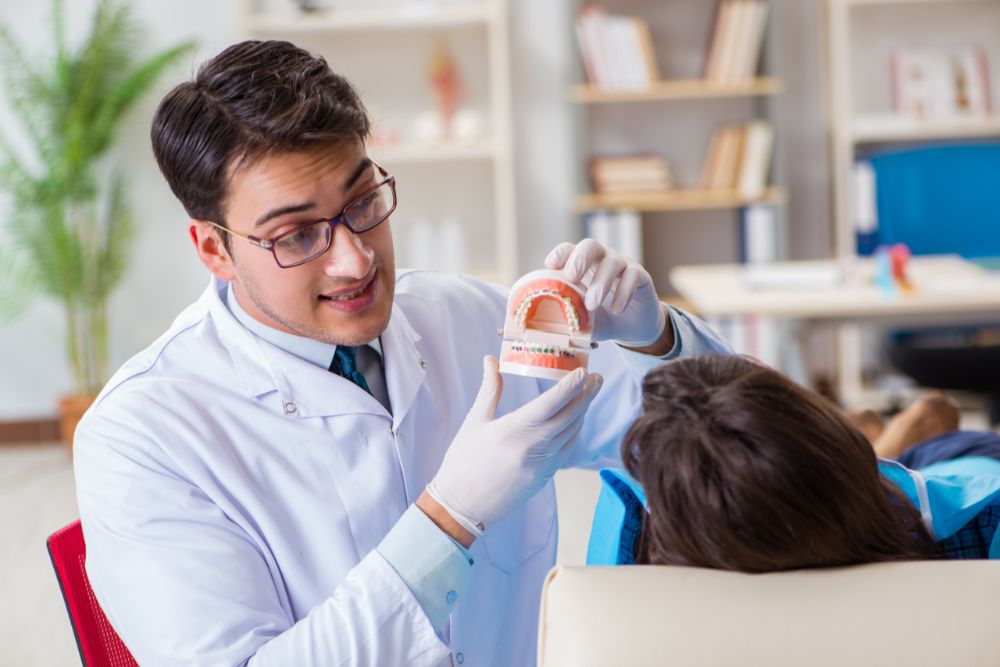Orthodontics has undergone a remarkable transformation over the past few decades, shifting from bulky, uncomfortable metal braces to sleek, tech-driven solutions that offer greater comfort, precision, and aesthetic appeal. Today, treatments are faster, more effective, and highly personalized. This evolution is particularly evident in global hubs like Dubai, where orthodontists in Dubai leverage state-of-the-art tools to provide world-class care. In this article, we explore how modern technology has reshaped orthodontics for both patients and professionals.
Digital Diagnostics and Imaging:
One of the most significant advancements in orthodontics is the move from traditional x-rays to advanced digital imaging. These tools offer highly detailed, three-dimensional visuals of a patient’s teeth and jaw structure, enabling more accurate diagnoses and efficient treatment planning.
Key technologies include:
- 3D cone-beam computed tomography (CBCT)
- Digital panoramic and cephalometric x-rays
- Intraoral scanners for quick, mess-free impressions
- Digital smile simulations and treatment previews
These tools help orthodontists identify issues earlier and design more precise interventions.
Customized Treatment Planning:
With the help of artificial intelligence and computer-aided design, orthodontists now create highly customized treatment plans tailored to individual needs. Instead of relying solely on physical models and estimates, practitioners can simulate tooth movements and outcomes digitally.
Benefits of this approach:
- Personalized aligner trays and brackets
- Predictable results with reduced treatment duration
- Improved patient communication using visual aids
- Adjustments made in real-time based on progress
This precision minimizes trial and error, making treatments more effective and less invasive.
Clear Aligners and Invisible Solutions:
Clear aligner therapy has revolutionized the field, offering a discreet and flexible alternative to traditional braces. Brands like Invisalign and ClearCorrect use digital models and 3D printing to produce a series of aligners that gradually shift the teeth.
Advantages of clear aligners:
- Nearly invisible appearance
- Removable for eating and oral hygiene
- Fewer office visits required
- Comfortable and smooth surface for less irritation
These systems are especially popular among adult patients and professionals seeking subtle treatment options.
Robotic Wire Bending and Smart Brackets:
Traditional braces have also benefited from innovation. Robotic systems can now bend archwires to exact specifications, improving fit and reducing the number of manual adjustments required during treatment.
Modern orthodontic tools include:
- Self-ligating brackets that reduce friction and improve movement
- Smart brackets with sensors that track progress
- Shape-memory wires that apply consistent pressure
- Heat-activated wires that respond to body temperature
Such advances make braces more efficient and comfortable than ever before.
3D Printing and Rapid Prototyping:
3D printing has become an essential tool in modern orthodontic practices. It allows for the fast production of customized appliances, including aligners, retainers, and even indirect bonding trays.
Applications of 3D printing in orthodontics:
- Creating accurate dental models from digital scans
- Designing retainers and night guards
- Printing aligner sets directly in the clinic
- Reducing lab costs and turnaround times
This technology helps orthodontists streamline workflow and provide faster service to patients.
Teledentistry and Remote Monitoring:
Digital communication tools have expanded access to orthodontic care and enhanced convenience for patients. Remote monitoring platforms allow orthodontists to track progress and adjust treatments without requiring in-person visits.
Teledentistry benefits include:
- Virtual consultations for initial evaluations
- Remote aligner progress tracking using apps or smart devices
- Time-saving for patients with busy schedules
- Enhanced accessibility for those in remote areas
Clinics, including those run by orthodontists in Dubai, now offer hybrid treatment plans that blend in-office visits with remote check-ins.
Laser Technology in Orthodontics:
Lasers are being used in various orthodontic procedures to enhance precision and reduce recovery time. They are particularly useful for soft tissue modifications, reducing inflammation, and accelerating tooth movement.
Common laser applications include:
- Gingival contouring for improved aesthetics
- Exposure of unerupted teeth
- Pain and inflammation management
- Faster healing and minimal bleeding
Laser-assisted procedures are less invasive, offering patients a more comfortable experience.
Enhanced Patient Experience and Education:
Modern technology has not only improved treatment outcomes but also transformed the patient experience. Digital platforms help patients visualize their progress, understand their treatment options, and stay engaged throughout the process.
Enhancements in patient experience:
- Virtual smile simulations for goal-setting
- Digital appointment reminders and updates
- Educational animations and apps explaining procedures
- Real-time treatment tracking and feedback
With better communication and transparency, patients feel more in control and satisfied with their care.
The Role of Technology in Dubai’s Orthodontic Landscape:
Dubai has become a leading destination for advanced dental care, and orthodontics is no exception. Clinics are equipped with the latest digital tools, and orthodontists in Dubai are often trained internationally, bringing global best practices to local care.
What sets Dubai apart:
- Access to cutting-edge devices and methods
- Multilingual staff and diverse expertise
- Luxury-level clinic experiences
- Seamless integration of digital and manual treatment techniques
This combination of technology and expertise positions Dubai at the forefront of modern orthodontic care.
Final Thoughts:
Orthodontics has come a long way from the days of clunky metal braces and guesswork. Thanks to modern technology, treatments are now more accurate, efficient, and patient-friendly than ever before. From 3D printing and smart brackets to AI-driven treatment planning and virtual monitoring, the tools shaping today’s smiles are nothing short of revolutionary. As seen in cities like Dubai, where orthodontists in Dubai continue to push the boundaries of what's possible, the future of orthodontics looks increasingly digital, precise, and personalized.






Comments